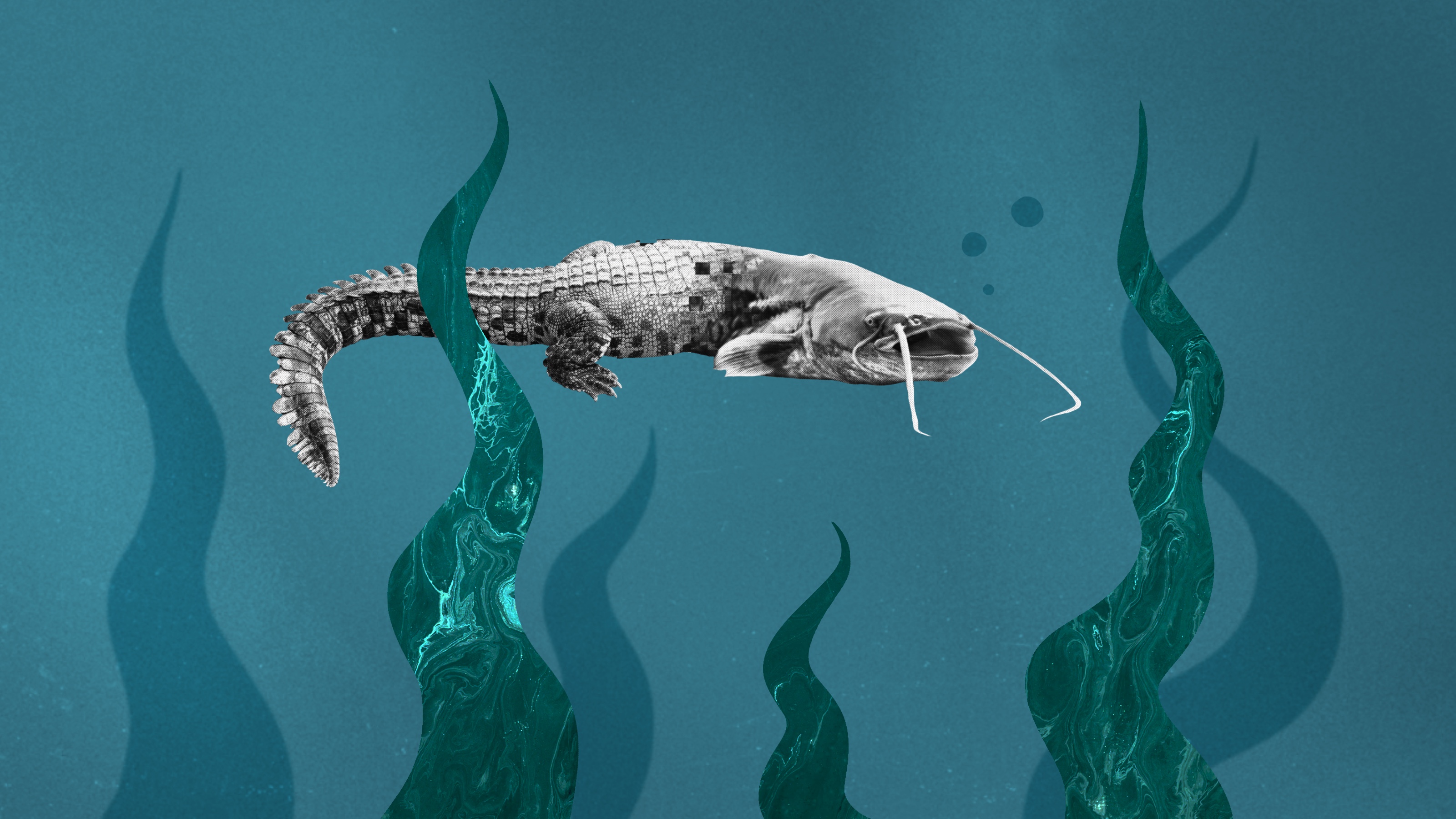A Soviet doctor’s wild experiment to create hybrid human-ape super warriors

- The concept of man-beast hybrids, or “chimeras,” has long fascinated humanity, with ancient tales and modern films exploring the tension between our rational and animalistic sides.
- In the early 20th century, Soviet scientist Ilya Ivanov attempted to create a human-chimpanzee hybrid, first in French Guinea and later in the USSR.
- Despite advancements in science, with a viable human-monkey embryo created as recently as 2019, the moral and ethical concerns surrounding human-animal hybridization remain a potent barrier.
The 1973 film The Wicker Man is one of the most quietly disturbing movies. One reason is that it features people dressed in animal masks. They appear from time to time, often just standing there in silence, and they’re watching you. Seeing a fully grown man wearing a fish face should be comical. In The Wicker Man, few in the audience are laughing.
There is something primal about the fear of man-beast hybrids. The earliest stories we know of contain many of these “chimeras” — humans but with an aspect of a beast. We have the minotaur, mermaid, harpy, or wendigo. The Hindu and ancient Egyptian pantheon are full of chimerical deities. These stories often represent tension between our human rational side and our animalistic drives. They’re also scary folk stories to tell around the campfire.
But what if chimeras were not just fiction? What if we could make these monsters real? Well, that is the story of Ilya Ivanov.
The story of hybrids
There are a lot of animal hybrids, and people are mostly okay with them. We mixed tigers and lions (ligers), bison and cows (beefalos), and camels and llamas (camas). Mules — a mix of horses and donkeys — have been used as working animals in agriculture and transportation for millennia. So, in the early 20th century, when naturalists suggested the idea of a human-chimpanzee hybrid, they were surprised by how ferocious the media and public outrage were.
While the idea scandalized Europeans, and their governments banned its research, the Soviet Union had no such compunction. There is a now discredited urban myth that, in the 1920s, Joseph Stalin was obsessed with populating his armies with half-human, half-ape super warriors. It was said he wanted a Planet of the Apes-style army dressed in red to barrel across Europe. He wanted no such thing (as far as we know). But what we do know — thanks largely to researchers who collected accounts by searching Russian archives — is that under Stalin’s rule, the first known experiments into creating a human-ape hybrid took place.
One up against religion
In the confused tumult of the Soviet Union’s early years, money was short, suspicion of academia was rife, and leaving permits were rarely given. So, getting a scientific study funded was pretty hard. Into this came Ilya Ivanov. Ivanov had spent time studying biology in Paris, and his work on artificial insemination had massively benefitted Russian agriculture in breeding more resilient horses.
From 1910, Ivanov became fixated on the idea of human-ape hybrids. He argued that hybrids would be stronger, more intelligent, and more resistant to disease than either humans or animals. It was Ivanov who saw the potential for super warriors. But Ivanov was wily. He knew that this, alone, would not get him the funding he needed. So, he branded his study very carefully.
Vladimir Lenin, Leon Trotsky, and their new USSR government were not only pro-communist but also aggressively anti-religious. They hated everything Christian. So, Ivanov branded his research as a win for atheistic humanism against the Church. If humans could make human-animal hybrids, they would be gods who could control their own evolution. Eden would be a trifle when seen against the brilliance of Soviet laboratories. Moscow loved it. And so, with $10,000 and a travel permit, Ivanov set off for Africa.
How to make a humanzee
Ivanov’s plan was simple: Head over to French Guinea, grab some apes, and pay local women to get on board. But there was one big problem. Ivanov hadn’t considered the social factors at play. West African folklore at that time featured stories of women being carried away by apes and raped. These women were ostracized by their communities. So, in a place where your community meant life or death, no woman would sign up, no matter how much Ivanov offered.
His second plan was to get men from his team — who were kept anonymous but listed as being of proven virility — to donate sperm. Ivanov would then inseminate all the female chimpanzees they could find. The problem with this, though, is that chimps are hard to find, harder to catch, and even harder to keep. Despite this, he found 13 chimpanzees and set about his artificial insemination.
After several months, there were no viable pregnancies. There was no humanzee gestation, at all. By now, Ivanov was desperate: Not only did he have a theory he wanted to prove, but he had been gifted $10,000 from a notoriously gulag-friendly government to spend. So he changed tack. He decided to inseminate women against their will under the guise of gynecological examinations. Thankfully for everyone, the French authorities found out about it and sent Ivanov home.
Back in the USSR
Undeterred, Ivanov carried on. He arranged for 20 chimpanzees to be sent to Russia, but only four survived the journey. In Russia, there was no hope of paying women to accept ape insemination (not to mention dwindling funds), so he called for any women to offer their bodies in the name of science. There was only one respondent. This volunteer — whom we know only as “G” — wrote this to Ivanov:
“Dear Professor… With my private life in ruins, I don’t see any sense in my further existence… But when I think that I could do a service for science, I feel enough courage to contact you. I beg you, don’t refuse me… I ask you to accept me for the experiment.”
Even by the standards of the time, it’s clear that G sounds mentally unwell; there was likely little “informed consent” involved in her participation. What’s more, the experiment came to nothing. By now, Ivanov was a dangerous embarrassment. He had dragged his chimerical experiments all over the world only to be mocked and reviled in equal measure. And so, in 1930, Ivanov was arrested in a purge of scientists and sent to Kazakhstan. He died two years later.
Ivanov’s story doesn’t necessarily end there. The search for “humanzee” hybrids goes on. In 2019, a team of scientists from the U.S., China, and Spain created a human-monkey embryo that was viable for 20 days. It was destroyed soon after. All research into similar chimeras these days includes a failsafe that means they will never reach full gestation. Today, human-animal hybridization is still the huge taboo it was in the 20th century. The difference, though, is that science is catching up, and it may be the case that only the taboo prevents it from happening.





